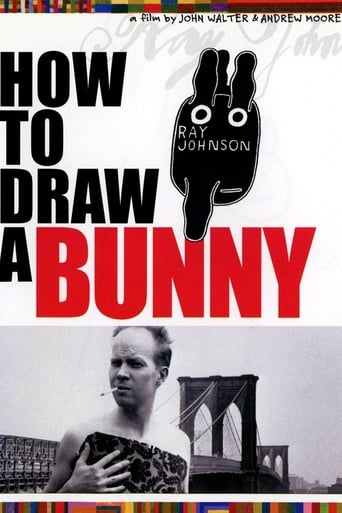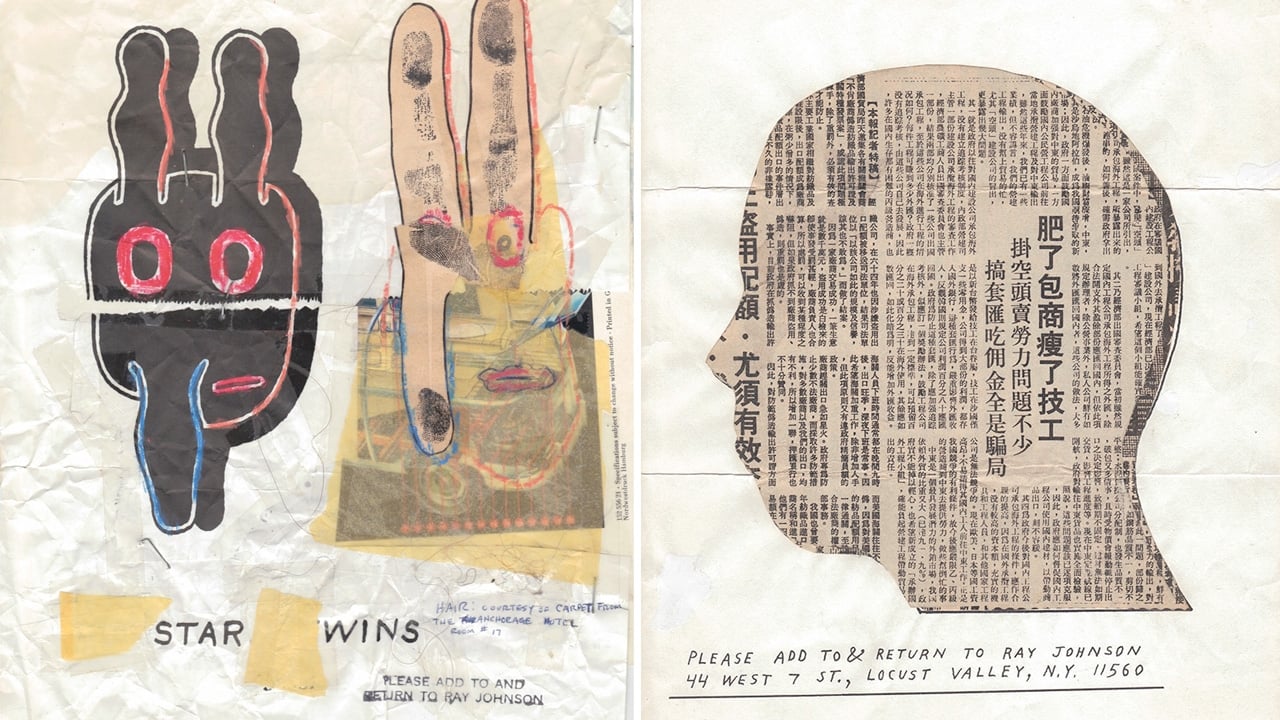fairchildqua
This is a doc about a fascinating character and there is no way a story about him wouldn't be interesting and worth a watch so definitely watch this movie with many caveats The soundtrack is from hell- I believed it was created to torture prisoners at Guantanamo Bau There are. No revelations just a really strange thing the director did- he kind of made his suicide like a work of his art very very controlling and interpretative and not documentary but ego driven and self driven Go see it for sure but not what it could have been in the right hands
Neddy Merrill
To the extent anything about abstract artist Ray Johnson lends itself to the description "straight-forward", "How to Draw a Bunny" is a straight-forward documentary about the man's life. The films spends some time on building mystery over Johnson's eventual suicide at 62 but the mystery turns out to be a little less surprising than the ending of "Titanic". Otherwise the documentary traces Johnson's life from childhood through the growth of his reputation in the abstract art community presenting mostly unknown contemporaries with the exception of Christo and his wife Jean-Claude. These friends, fellow artists and others can give little insight into understanding Johnson's remote collages or his unusual behavior. Ultimately, whether you enjoy the film depends on whether you find an interest in Johnson 's art and life which limits the audience for the film severely.
yentrog31
see "yawns" review first of all ....I usually like this kind of arty movie/doc most of the time cause I like history.Information of any kind is learning and ART.Having said that this was trash.....as I watched this story unfold I kept saying this guy is garbage....he makes collages..he has no artistic talent himself so he uses/fuses other stuff and glues it on boards..wow great talent.....it was crap..Im sorry he died a suicide death but a mysterious death does not make a great artist..esp one who took brand names and a gallon of glue and a gay lifestyle and his friends say he was misunderstood..I think the artist himself knew what HE was all about..a life of crap art and he knew he had no talent himself....let this one pass.
Cosmoeticadotcom
Henry Darger. That is the name that hovers behind this 2002 documentary film, How To Draw A Bunny, by John Walter, which won the Special Jury Prize at the 2002 Sundance Film Festival, and details the life and wannabe legend of minor pop artist Ray Johnson (1927-1995). For those not in the know, Henry Darger was a hermit who, upon his death in the early 1970s, became a bit of a sensation when some bad artistes found and published excerpts from his lifelong continuing novel, with collages, about a make believe planet where naked girls with penises battled aliens who did not believe in Jesus Christ. The man's writing is uniformly terrible but, of course, the bad artistes that championed his work did so with such zeal that more mainstream and high profile artists, like singer-songwriter Natalie Merchant and poet John Ashbery, latched on to his brief flame of recognition by mentioning Darger in mediocre works of theirs.Naturally, Dargermania faded, for the truth is there was a very good reason Darger's fame was fleet. His work- both literarily and visually, sucked. This film tries to similarly hagiographize Johnson, by linking him with much better artists like Andy Warhol and Roy Lichtenstein, who is one of many interviewees. Yet, like Darger, the bulk of Johnson's work was bad, really bad. Unlike Darger, however, Johnson- whose early 1995 suicide is treated as a mystery even if it seems utterly predictable given the man's narcissistic nature, actually had some artistic talent early on, even through some intriguing silhouette portraits. Of course, it dried up and Johnson went into collage- ala Darger, which even the most jaded of visual artists will be the first to admit is the genre that frauds inevitably turn to. Why? Because one can simply toss a bunch of random 'found' things together, claim it art by fiat, and a bunch of clueless acolytes and sycophants, who merely 'like' the artist personally, and know little of the creative process and art, will later rhapsodize about his 'pushing of boundaries', or other such banal nonsense. Naturally, when that artist leaps off into creative nihility or bankruptcy he cannot push boundaries, for to do so one must be within the art form.In this regard, Johnson is well in line with frauds such as Jackson Pollock and the Abstract Expressionists, the LANGUAGE poets, and dozens of other earlier isms and Schools, which tried to substitute creative bankruptcy with hipster posing of one sort or another. When the Johnson acolytes speak reverently of his suicide off a bridge as a piece of performance art they verge on self-parody. If Walter really wanted to focus on an artist of worth who jumped off a bridge, would not the poet and critic Weldon Kees, whose death truly is a mystery, have been a much better subject?
. Yet, it would take a great filmmaker to make such a trite life interesting. Johnson's idea of wit includes apothegms like, 'Keir Dullea, gone tomorrow,' and his idea of 'art' includes Xeroxed grotesques of bunnies with his artsy pals' names on them, and collages called moticos- which lack any of the inventiveness or savvy of contemporaries like Warhol or Lichtenstein. Johnson's idea of 'political commentary' is images of celebrities as famous as James Dean and Elvis Presley, and as bizarre as Shelley Duvall- yet all adorned with Lucky Strike cigaret logos. The older he got the more seemingly demented and deluded he got. This is evidenced by such acts as letting a gullible acolyte videotape him doing nothing for several years, or dropping sixty foot long hot dogs over Riker's Island from a helicopter, or Magic Marking a cardboard box, then hopping about it on one foot while beating it with a belt. Of course, in the end, that old cliché- the death obsession, got to him, as it does so many wannabe artists who really masque their mental ills with their pretensions.Still, his gay lover and friends, like artist Jean-Claude (wife of Christo- the noted 'wrapper') ask such queries as why his work was not 'recognized' with a straight face, even as she and the others all speak of how 'nice' and 'honest' a guy he was because they simply have no way to realistically declaim his 'work' as having any real artistic value. Praising the person when speaking of an artist is always a giveaway as to the artist's lack of talent and accomplishment, much as is talking of the artist's 'intent', rather than 'accomplishment'. In this sense, Johnson was actually closer to a pre-Keith Haring Haring than a Henry Darger, much less an Andy Warhol- who, despite his persona, was an artist of- if not the first rank, certainly the second. Johnson was merely a mental case with some vague creative impulses, who never quite got his mental act together.The fact is, as mentioned earlier, that one cannot truly push an art's boundaries if one leaps wholly outside of it, and one's work has no real nor direct relation to its claimed art form. True originality comes only from within, and the multifarious ways that great artists use and reuse existing forms in new ways to achieve their ends. Simply put, Ray Johnson was neither good nor original. All that he did in his 'art' was done before and better by others. That the same can be said of his documentarian's film may be a small synchronicity, but that's all it is. What it is not is art.


 AD
AD
